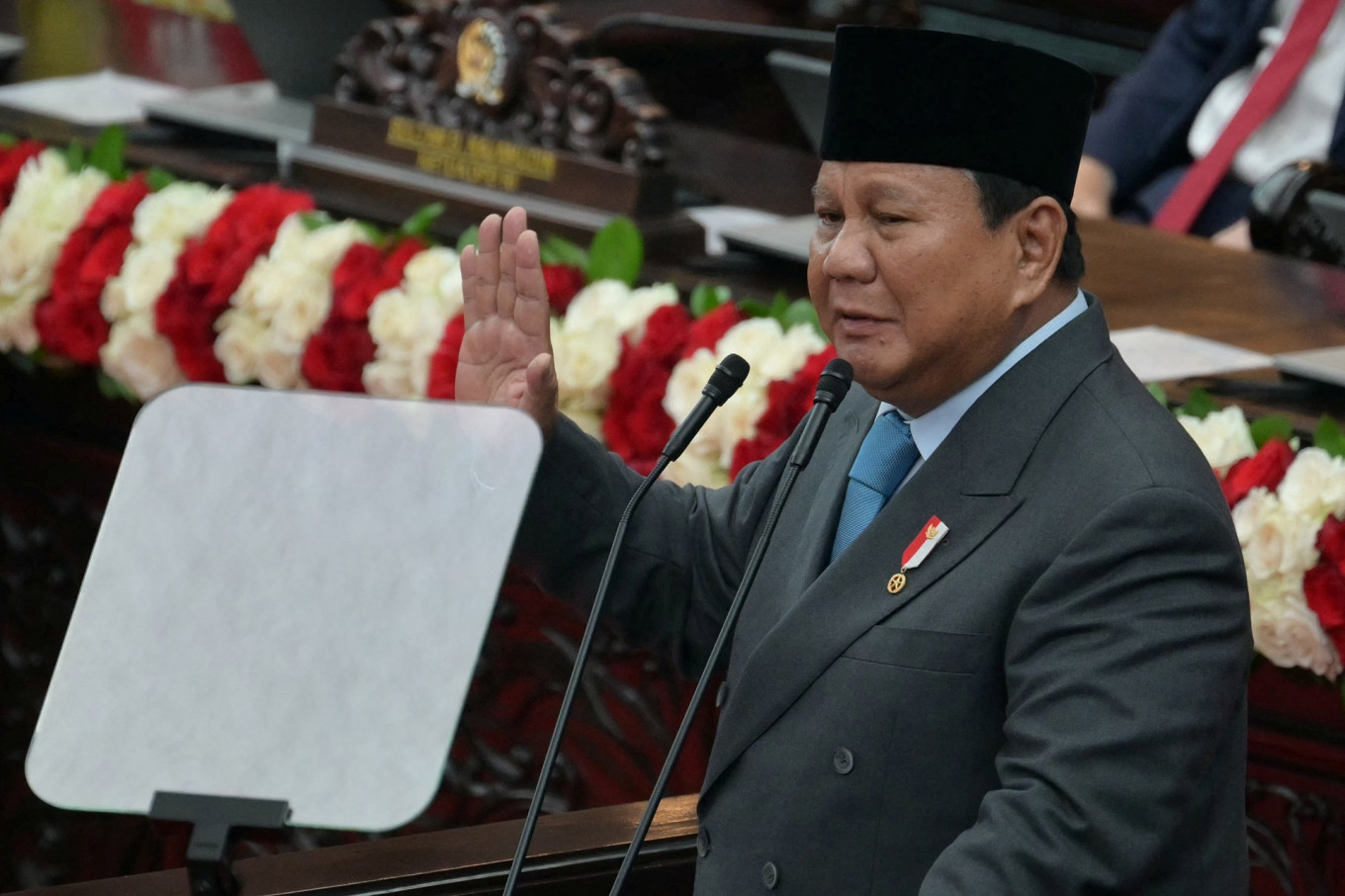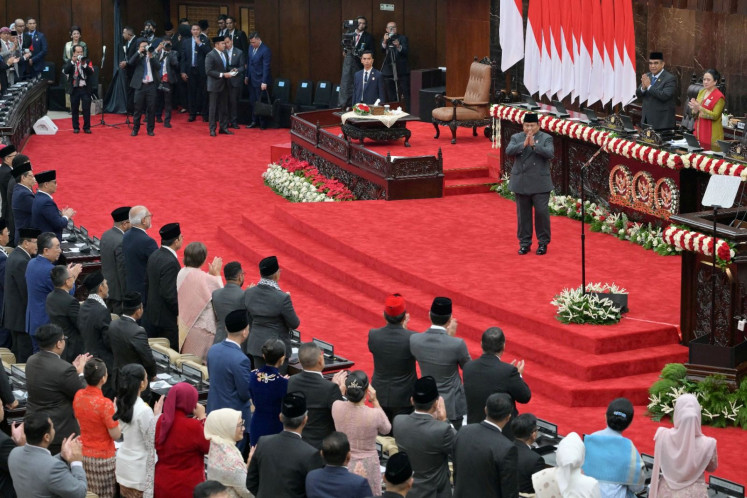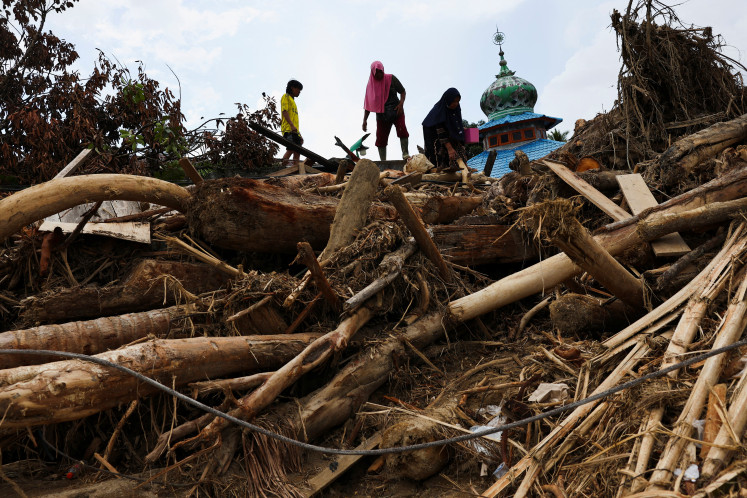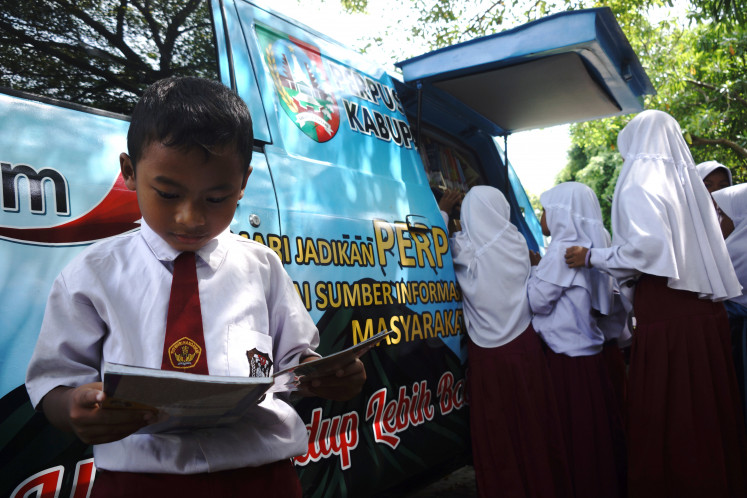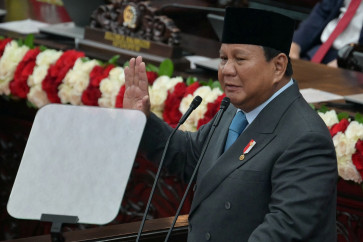Popular Reads
Top Results
Can't find what you're looking for?
View all search resultsPopular Reads
Top Results
Can't find what you're looking for?
View all search resultsFiscal space for investment shrinks in 2026 budget
The 2026 state budget proposal reveals a fiscal style built on obligations that, while reassuring today, may limit the government’s flexibility in shaping the future.
Change text size
Gift Premium Articles
to Anyone
B
udgets are never just spreadsheets. They are mirrors of national priorities, showing not only where money flows but also what kind of legacy a government wants to leave. Former president Joko “Jokowi” Widodo budgets were defined by concrete and steel: toll roads, ports and power plants that physically reshaped Indonesia.
President Prabowo Subianto’s first budget tells a different story. The 2026 state budget proposal is less about building assets and more about providing comfort. But in doing so, it also reveals a fiscal style built on obligations that, while reassuring today, may limit the government’s flexibility in shaping the future.
The 2026 draft budget is now essentially locked in, awaiting only formal passage in parliament. The numbers are historic, almost Rp 3.8 quadrillion (US$230 billion) in spending, with education, energy, health, food security and the president’s flagship free meal program taking center stage. On paper, it looks like a budget designed to nurture people and strengthen stability. But what makes this budget striking is not the size of its allocations, but how little room they leave for flexibility. Much of the money is tied to commitments that are politically irresistible and fiscally immovable.
Nearly Rp 600 trillion is earmarked for debt service (debt interest payments and debt repayments) in 2026.
This is not an extraordinary jump since Indonesia’s debt servicing costs have been rising steadily for years, but it is structurally immovable. Once taken on, debt must be repaid, and every year this line item grows a little larger. Add the Rp 335 trillion for free meals for school children (MBG program) to the mix, and almost a quarter of spending is locked into commitments that cannot easily be scaled back. Compared to peers, the paradox becomes clear.
Indonesia’s debt-to-GDP ratio is a modest 40 percent, close to Vietnam’s 39 percent and far lower than Malaysia’s 64 percent. But servicing costs swallow around 40 percent of government revenues, far higher than Vietnam’s 25 percent or Malaysia’s 20 percent. The rigidity of repayments and the growing inflexibility of debt servicing mean fiscal space is already narrow, and new obligations like MBG only make that room even tighter.
Other countries have learned this the hard way. India’s Midday Meal Scheme, serving over 120 million children, became the largest school feeding program in the world. It boosted attendance and nutrition, but state budgets struggled to keep pace as costs rose year after year, and quality problems, including cases of food poisoning, undermined public trust. Sweden’s universal free school lunches, by contrast, have endured since 1973 because they were integrated with education and health systems.

